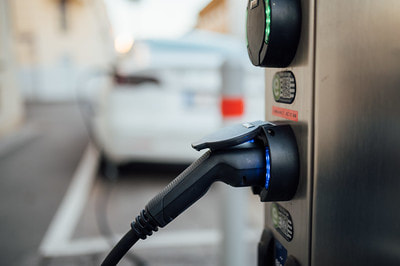By Sarah Lozanova, Clean Energy Copywriter Fires in electric vehicles (EVs) and Energy Storage Systems (ESS) have gained significant media attention in recent years. In a high-profile move, GM recalled Bolt batteries in 2020 and 2021, costing the company $1.9 billion. Battery defects were contributing to thermal runaway, but GM was not alone. Hyundai and Ford also recalled batteries for causing fires, costing the companies hundreds of millions of dollars each. Likewise, there is a risk of building fires from residential, commercial, and utility-scale energy storage batteries. For example, due to fire hazard concerns, LG Energy Solutions recalled roughly 10,000 RESU 10H storage batteries in 2021. In addition, in 2019, an ESS caused an explosion at an Arizona Public Service (ASP) site, injuring several firefighters. Although manufacturer defects have contributed to this issue, clean energy technicians need to create a thermal management strategy to prevent the risk of thermal runaway and the associated fire danger. What Is Thermal Runaway? Thermal runaway can be unforgiving if left unchecked. Thermal runaway is a process that involves increased temperature. Then, the release of energy causes a greater increase in temperature. Then, the cycle repeats itself, and this uncontrolled positive feedback can have a destructive result. This phenomenon occurs in chemical engineering with exothermic reactions and electrical engineering with increased current flow and power dissipation. In civil engineering, thermal runaway occurs when large amounts of excess heat are released from curing concrete or in astrophysics with runaway nuclear fusion reactions in stars. What Is Thermal Runaway In A Battery? Thermal runaway in lithium-ion battery pack technology can occur when damage in a battery cell causes the release of toxic or flammable gases. This can then create a chain reaction as the decomposition of one battery cell spreads, causing further chemical reactions. In the process, heat builds up more quickly than it can dissipate. Finally, the battery ignites or even explodes. One critical component in a lithium-ion battery is the separator, a porous membrane separating the anode and cathode sides of the battery while allowing ion transfer. However, separator breakdown, often caused by heat, can lead to thermal runaway. Abuse factors on batteries are also often the trigger of thermal runaway. Common abuse factors include overcharging, overheating, battery misuse, manufacturer defects, and short circuits. Often, excess heat accumulates faster than it is expelled. This causes the electrolyte in the battery to turn from a liquid into a gas. As the gas expands, it increases the internal pressure in the battery faster than it can be vented. If there is intervention at this point and the abuse factor stops, this can prevent thermal runaway. However, if the separator in the battery is damaged, the positive and negative sides of the battery start mixing. The cracking of the separator causes smoke, which signals that failure is imminent and thermal runaway occurs. Thermal Runaway: Dangers, Containment And Prevention Unfortunately, thermal runaway can happen very quickly and for many different reasons, causing extremely high temperatures and fires that are difficult to extinguish. Dangers When a chain reaction creates cascading thermal runaway, containment can be difficult. An investigation into the ASP example referenced above found a battery cell defect likely caused cascading thermal runaway in the battery energy storage systems (BESS). Once set in motion, thermal runaway was difficult to stop, causing significant property damage and exposing the need for more extensive prevention and mitigation training. Although the total flooding clean agent fire suppression system at the ASP worked as designed, it is only capable of handling a beginning-stage fire and could not contain cascading thermal runaway. However, the chain reaction started in the defective cell and occurred in every cell and module in one rack within the lithium-ion BESS. The uncontrolled cascading thermal runaway led to the production of a large quantity of flammable gases. When the firefighters opened the door, it agitated the gases and allowed them to make contact with a heat source or spark, causing an explosion. First responders and BESS operators need adequate training in BESS safety or their actions could make the situation more dangerous. Containment Unfortunately, lithium-ion battery fires are extremely challenging to suppress. Often, large amounts of water need to be applied for hours or even days, which can be difficult or even impossible in certain settings. As lithium-ion battery technology advances, there is greater knowledge about safety and containment. It is critical for battery manufacturers to prevent cell failures that are contributing to thermal runaway, but there are also many actions that clean energy technicians can take to mitigate risks. For example, when drawing new BESS facilities, it’s important to give extensive consideration to containment systems, ventilation, and monitoring technology. Corrective System Shutdowns Early detection of a cell failure is key to preventing thermal runaway before it gets started, and battery management systems can be helpful for this. Just like our phones have a battery management system that prevents them from overcharging, this is also critical in BESS. Battery management systems in BESS facilities track data that helps prevent thermal runaway. However, sometimes issues aren’t properly detected before it’s too late. Therefore, it is important to have other safety measures in place. Monitoring for internal temperature spikes and off-gassing are ways to prevent the situation from escalating because they are critical indicators of malfunction. However, monitoring for gases often requires detecting low levels of a blend of gases, such as carbon monoxide, methane, ethane, and ethylene. Conventional gas detectors may not be suitable to detect such low levels. When effective, the battery shuts down when the monitoring system identifies excess gases, and the gas levels can then slowly return to normal. However, the battery cell will likely be damaged and need to be replaced. In some cases, Authorities Having Jurisdiction (AHJs), insurance companies, and utility companies may require off-gas monitoring. Early detection can prevent property damage and promote safety. Now, many BESS facilities are installing off-gas detection systems in addition to fire suppression systems for incipient fires. Likewise, a ventilation or cooling system strategy is also helpful in preventing the buildup of flammable gases. Mitigating Dangers Constructing BESS facilities out of non-combustible materials and having sufficient ceiling height to prevent the accumulation of combustible gases help prevent fires. In addition, local first responders need training in BESS because it requires significantly different tactics and approaches. How To Prevent Thermal Runaway Preventing thermal runaway events is much better than containing them once they’ve started. Battery manufacturers can take actions to mitigate risks, such as adding protection circuits to maintain safe operation. This helps prevent overcharging, rapid discharging, and short circuits. There are also lessons to learn from past explosions and fires involving lithium-ion batteries. Investigations into fires and explosions at BESS facilities highlight several likely contributors. Common contributors to thermal runaway include:
Having a detailed commissioning plan in place that can help prevent issues during construction is critical. In addition to containment strategies, such as proper ventilation and monitoring equipment, proper battery handling is essential; batteries must be protected during installation to prevent damage. Also, safe operations and maintenance practices should be taught to all facility staff. Creating effective operations and maintenance protocols and adequate operator training is helpful in preventing the operation of the BESS system outside safety parameters and ensuring adequate testing. Likewise, BESS facilities should create plans that address extreme weather events, natural disasters, and other emergencies. Lithium-ion batteries must undergo UL 9540A testing of fire safety hazards caused by thermal runaway to be available on the market. This testing documents the temperature at which the onset of thermal runaway is detected and the temperature at which the cell begins venting due to the internal pressure increase. This fire test report can be helpful for AHJs, insurance agents, fire departments, and building owners. Read more...  Sarah Lozanova is a renewable energy writer and solar marketing specialist, that uses digital marketing campaigns to drive results. She has an ability to gain media attention, boost website traffic, and engage interest on social media platforms. Lozanova connects solar energy companies to their target markets, by raising visibility, then hooking and engaging readers to request more information or take next steps. Her renewable energy writer experience includes residential and commercial solar energy, battery energy storage systems, electric vehicles, and utility-scale wind energy, and she is the author of Humane Home: Easy Steps for Sustainable & Green Living. Sarah Lozanova holds an MBA in sustainable management from Presidio Graduate School and resides in Midcoast Maine. |